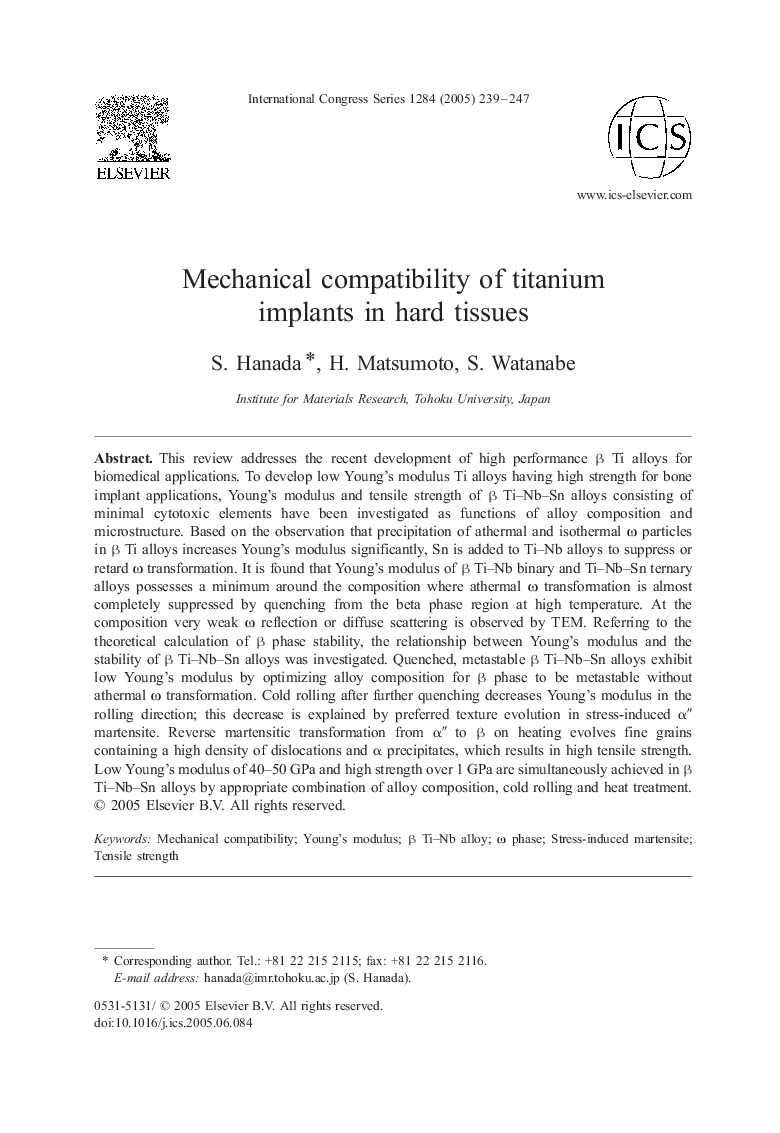| Article ID | Journal | Published Year | Pages | File Type |
|---|---|---|---|---|
| 9021405 | International Congress Series | 2005 | 9 Pages |
Abstract
This review addresses the recent development of high performance β Ti alloys for biomedical applications. To develop low Young's modulus Ti alloys having high strength for bone implant applications, Young's modulus and tensile strength of β Ti-Nb-Sn alloys consisting of minimal cytotoxic elements have been investigated as functions of alloy composition and microstructure. Based on the observation that precipitation of athermal and isothermal Ï particles in β Ti alloys increases Young's modulus significantly, Sn is added to Ti-Nb alloys to suppress or retard Ï transformation. It is found that Young's modulus of β Ti-Nb binary and Ti-Nb-Sn ternary alloys possesses a minimum around the composition where athermal Ï transformation is almost completely suppressed by quenching from the beta phase region at high temperature. At the composition very weak Ï reflection or diffuse scattering is observed by TEM. Referring to the theoretical calculation of β phase stability, the relationship between Young's modulus and the stability of β Ti-Nb-Sn alloys was investigated. Quenched, metastable β Ti-Nb-Sn alloys exhibit low Young's modulus by optimizing alloy composition for β phase to be metastable without athermal Ï transformation. Cold rolling after further quenching decreases Young's modulus in the rolling direction; this decrease is explained by preferred texture evolution in stress-induced αʺ martensite. Reverse martensitic transformation from αʺ to β on heating evolves fine grains containing a high density of dislocations and α precipitates, which results in high tensile strength. Low Young's modulus of 40-50 GPa and high strength over 1 GPa are simultaneously achieved in β Ti-Nb-Sn alloys by appropriate combination of alloy composition, cold rolling and heat treatment.
Related Topics
Life Sciences
Biochemistry, Genetics and Molecular Biology
Molecular Biology
Authors
S. Hanada, H. Matsumoto, S. Watanabe,
